Community Tip - You can subscribe to a forum, label or individual post and receive email notifications when someone posts a new topic or reply. Learn more! X
- Community
- Creo (Previous to May 2018)
- Creo Modeling Questions
- Re: Singularities and Isolate for Exclusion AutoGE...
- Subscribe to RSS Feed
- Mark Topic as New
- Mark Topic as Read
- Float this Topic for Current User
- Bookmark
- Subscribe
- Mute
- Printer Friendly Page
Singularities and Isolate for Exclusion AutoGEM Controls
- Mark as New
- Bookmark
- Subscribe
- Mute
- Subscribe to RSS Feed
- Permalink
- Notify Moderator
Singularities and Isolate for Exclusion AutoGEM Controls
Last week, a customer was concerned about the singularity warning that Creo Simulate sometimes prints near the end of the summary file.
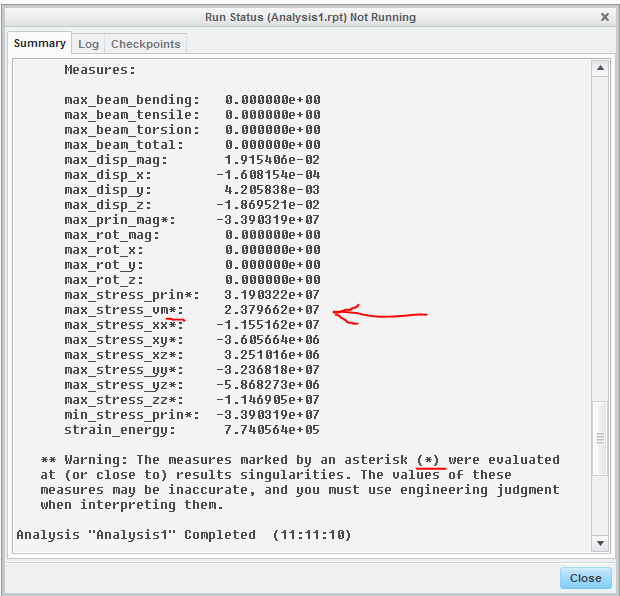
The key phrase of this warning message is “use engineering judgment”. This blog post describes what may happen if you don’t, and along the way discusses some subtle aspects of isolate for exclusion AutoGEM controls.
The customer’s model looks like this.

Running the analysis results in the following stress results:
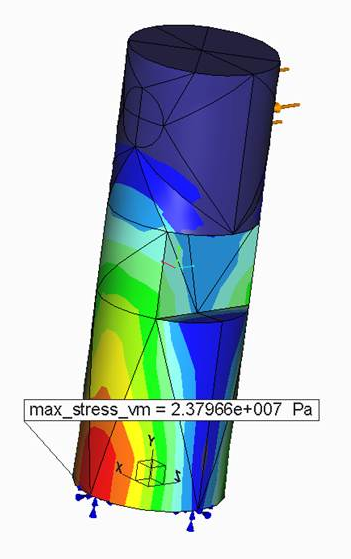
These results look OK, but the customer was concerned because Simulate warned that the max_stress_vm measure occurred near a singularity. In fact, the high stress is at a singularity, but not at the singularity that Simulate automatically identified.
Simulate identifies only certain types of singularities, such as point loads, point constraints and reentrant corners. In these cases, Simulate is very conservative in terms of what measures are identified as occurring near a singularity. Any measure result that occurs within an element that touches a singularity is identified as being "near" the singularity. In this model, there are four reentrant corners, one of which I've highlighted in red below:
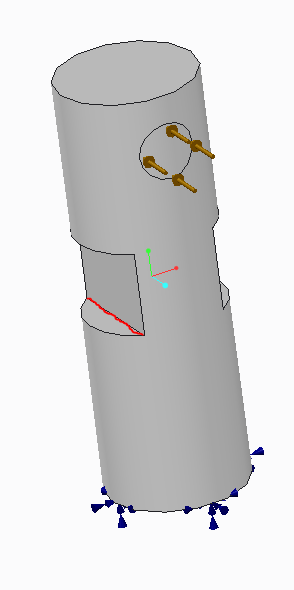
Looking at the results again, we see that the measure value occurs in an element that touches the reentrant corner. However, the measure value occurs some distance away from the reentrant corner, and therefore is probably not influenced by it.
By the way, because of the way this model is constrained, there is a singularity along the boundary curve of the surface constraint.
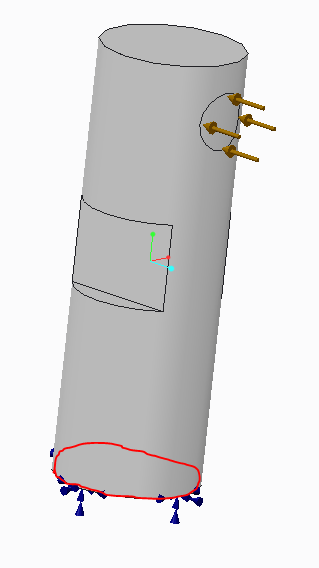
This singularity occurs in materials with non-zero Poisson's ratio. However, this singularity is fairly weak and usually does not influence the results very much. For this reason, this type of singularity is not automatically identified by Simulate. Another type of singularity that is usually weak and is not automatically identified by Simulate is at the boundaries of interfaces where parts of different materials are bonded.
If you try to avoid the singularity warning message by creating an Isolate for Exclusion AutoGEM control…

and you pick the Preselect Singularities button...

and check Reentrant corners, then Simulate pre-selects the four reentrant corner edges but not the bottom edge.

Note that the Exclude check box is checked by default. This has the important effect that any elements that touch the Isolate for Exclusion Control will be excluded from measure computations. Running an analysis with the isolate for exclusion control results in:
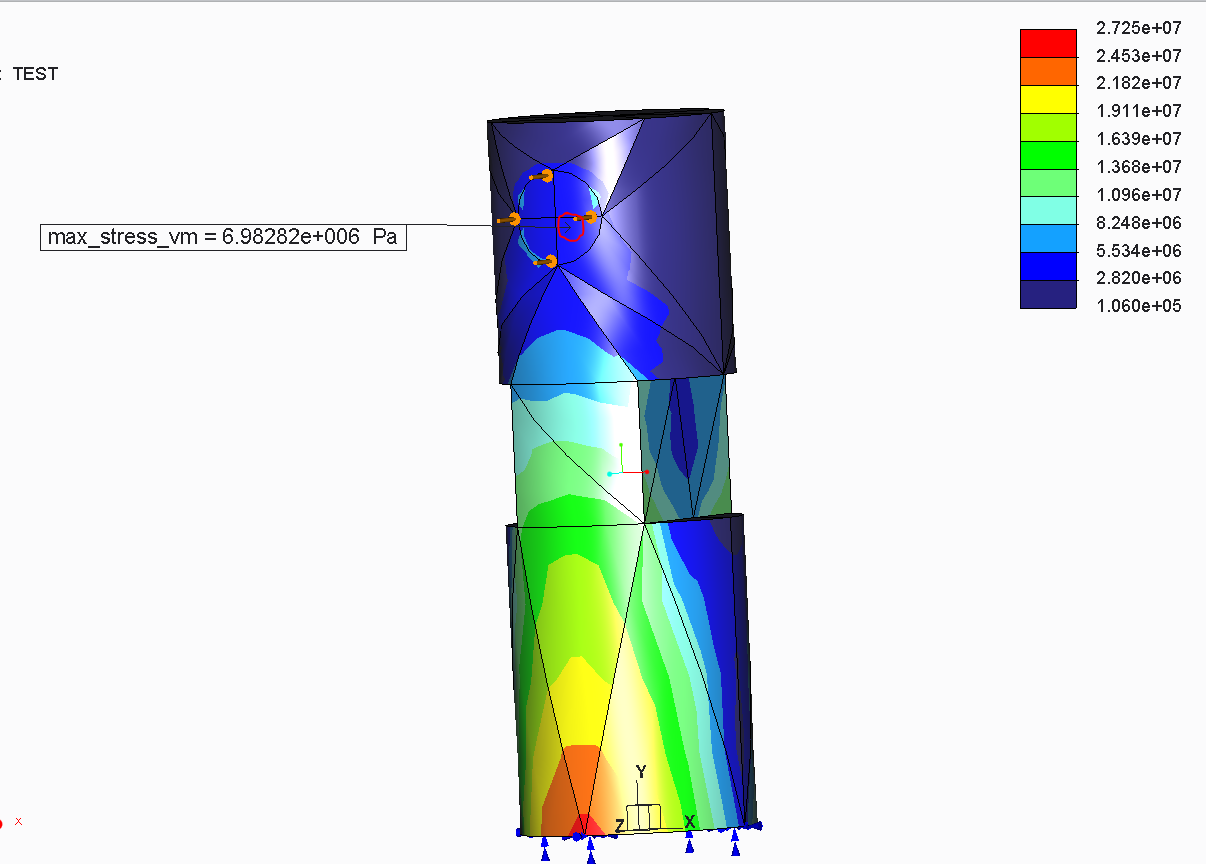
Note that maximum value 2.7e5 Pa is similar to that from the previous analysis (2.4e7 Pa) but because every element that touches the four reentrant corner edges is excluded from measure evaluations, the value of the measure max_stress_vm is only 7.0e6 Pa and it occurs far from the high stress in the model. To avoid this problem, when using “isolate for exclusion” AutoGEM controls, it’s usually best to isolate the singularity from the rest of the model by entering a maximum element size on the dialog box:
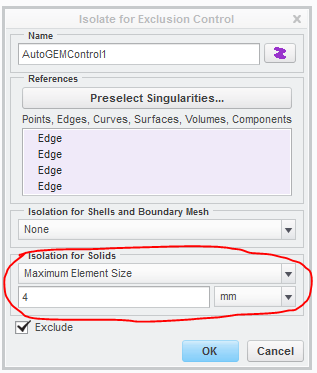
The new results are:
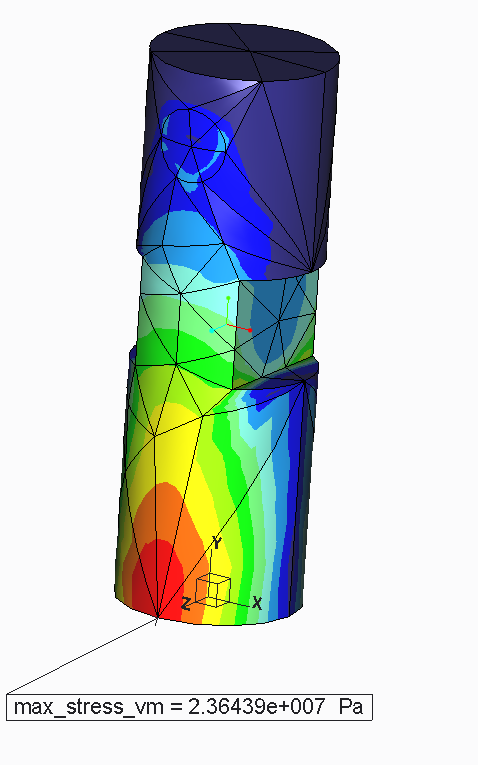
Note that reentrant corners are now "isolated", because all of the elements that touch the reentrant corners are relatively small, having edges that are less than 4 mm in length.
If desired (but not required in this case), you can get rid of the reentrant corner singularities by rounding them, resulting in:
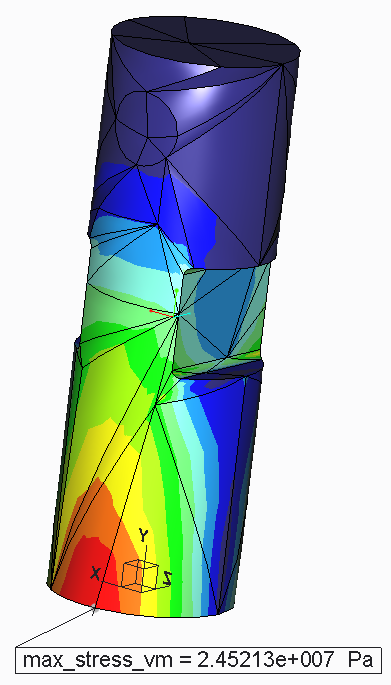
In conclusion, here are some points to remember:
- If you get the singularity warning message, be sure to closely examine your results to see if the singularities truly affect the results you care about.
- By default, measures are not evaluated in the elements that touch the references of “isolate for exclusion” AutoGEM controls.
- Therefore, if you use the “isolate for exclusion” AutoGEM control, you probably want to control the element size near the singularity.
- You can round a reentrant corner edge to eliminate those singularities.
- Tags:
- creo_simulate
- Mark as New
- Bookmark
- Subscribe
- Mute
- Subscribe to RSS Feed
- Permalink
- Notify Moderator
Thanks Tad! I was aware of the 'isolate for exclusion' functionality, but this is a good clear explanation of how it works and some pitfalls to be aware of.
A couple more questions:
- Are isolated elements also ignored for convergence?
- Does the max element size in the Isolate dialogue box apply only to elements touching the selected singularities / edges?
- Mark as New
- Bookmark
- Subscribe
- Mute
- Subscribe to RSS Feed
- Permalink
- Notify Moderator
Johathan,
I'm glad you found this post helpful. In answer to your questions:
- Yes, excluded elements can be ignored during convergence computations. Here's the relevant help topic
- Yes, the maximum element size applies only to elements that touch the singularity..
- Mark as New
- Bookmark
- Subscribe
- Mute
- Subscribe to RSS Feed
- Permalink
- Notify Moderator
Tad,
I wish the help section in pro/mechanica/Simulate was a helpful as this blog! If only this information was around years ago when I was learning this information the hard way. I agree with Jonathan this is a clear and helpful explanation of this topic. Your post have been very insightful especially the discussion of limiting hardware with respect to analysis solution time. I have made many improvements since your explanation of solram and other parameters. Again I thank you.
Is there any chance you would be willing to take requests for discussion topics? I have been experimenting with stress error plots and advanced SPA convergence to gain insight to solution accuracy while keeping simulation times reasonable but am not sure if my assumptions are correct. Any information would be very helpful.
I hope Simulate continues to improve as the last several revisions into Creo have been extremely valuable to my organization and have helped our designs tremendously. Forgive me if this is the wrong method to post this and thanks again for your contributions and time and I hope to see more in the future.
- Jarret -
- Mark as New
- Bookmark
- Subscribe
- Mute
- Subscribe to RSS Feed
- Permalink
- Notify Moderator
Jerret,
Thanks for your kind words of encouragement and I'm glad you're finding the blog useful. It's also great to hear that Simulate plays an important role in your organization.
The source of my blog posts are questions posed by customers via Technical Support that happen to find their way to me. If I think my answer may be helpful to others, then I'll post it here. I am open to suggestions for blog topics but can't promise to address them.
If you have specific technical questions about the product, your best resource is probably our Technical Support engineers. I've also been impressed with the help and advise that Simulate users have been giving each other here in these PTC Community forums.
Tad
- Mark as New
- Bookmark
- Subscribe
- Mute
- Subscribe to RSS Feed
- Permalink
- Notify Moderator
So when you exclude elements and analyse results, you have to go to info--> measures --> max_stress_vm in order to find the max. stress and the legend has become useless?
Why doesnt the legend just update ignoring the excluded elements?
- Mark as New
- Bookmark
- Subscribe
- Mute
- Subscribe to RSS Feed
- Permalink
- Notify Moderator
bj,
That's a good question, but I'm afraid I don't have a good answer for you. I agree that it would be good if Simulate could ignore the stress values in excluded elements when calculating the legend levels. I think we should consider adding that feature to the product.
Thanks for your question.
Tad

